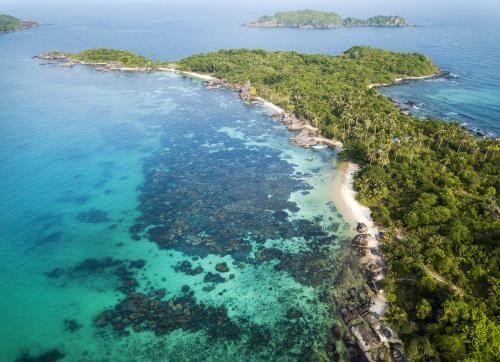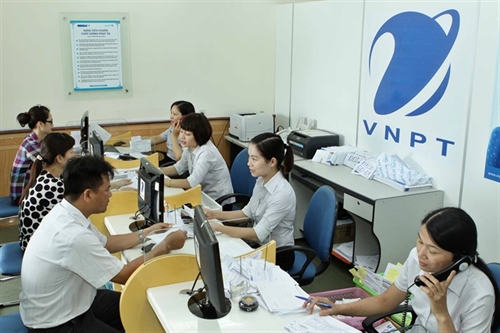Vietnam has exerted efforts to tap into its immense maritime potential to become a strong, prosperous country based on its marine economy.
On February 9, 2007, the 10th Communist Party of Vietnam Central Committee adopted Resolution 9 on the country’s marine strategy towards 2020, looking to further enhance its sea-based economy and protect national sovereignty over its islands and sea territories.
 |
| Phu Quoc island of Kien Giang province__Photo: VNA |
In the strategy’s outlined goals, sea-based economic sectors will make up 53-55 percent of the country’s gross domestic product (GDP), while per capita income in coastal areas is expected to reach double the national average by 2020.
Assessing the 10-year implementation of the strategy, Deputy Minister of Natural Resources and Environment Tran Quy Kien said that after the resolution was issued, the National Assembly passed the 2012 Law of the Sea of Vietnam, the 2015 Law on Sea and Island Natural Resources and Environment, the 2015 Maritime Code of Vietnam, and the Law on Fisheries (amended in 2017), together with many regulations for sectors relating to seas and islands.
More than 10 Government decrees and over 100 resolutions from the Prime Minister on State management and the implementation of policies, strategies, planning schemes, and programs on sea and island socio-economic development and defense-security have been issued, he added.
Following the Party and State’s policies and decisions over the past decade, ministries, central agencies, and coastal localities have made every effort to concretize the strategy in marine economy development programs and projects.
According to statistics by the Vietnam National Administration of Tourism (VNAT) under the Ministry of Culture, Sports, and Tourism, international arrivals to Vietnam have increased by over six times in the last 17 years, from 2.14 million in 2000 to 12.9 million in 2017. Domestic holidaymakers also rose sharply during the period, from 11.2 million in 2000 to 73.2 million in 2017. Of the domestic and foreign vacationers, about 60 million visited the 28 coastal cities and provinces last year.
Data from the VNAT also showed that the tourism sector had made significant contributions to the national economy during the period, with total tourist revenue reaching 510.9 trillion VND (22.6 billion USD) in 2017. Of the figure, the 28 coastal cities and provinces made up 70 percent.
The maritime economic sector saw remarkable development, with the value of maritime transport, seaport services, and shipbuilding growing at an annual pace of 22 percent during 2007-2010 and 13 percent during 2011-2015. By the end of November 2017, the fleet of seagoing vessels had a total load of 7.8 million tons, ranking fourth in ASEAN and 30th in the world. Total goods cleared at seaports increased year-by-year, hitting 511.6 million tons last year.
Seafood catching and processing surged 50 percent over the 10 years, from 2.07 million tons in 2007 to 3.19 million tons in 2017. The seafood export value has also tended to increase in recent years, reaching 7.05 billion USD in 2016.
Furthermore, by the end of 2017, the country had 17 coastal economic zones with a total area of nearly 845,000ha, attracting around 78.6 billion USD in investment. In 2016, the coastal economic zones earned 8 billion USD in revenue and over 5 billion USD in exports, as well as contributing 30 trillion VND (1.28 billion USD) to the State budget. The coastal economic zones created direct jobs for 130,000 laborers.
Over the past 10 years, the management and exploitation of natural resources and maritime environment have recorded certain results, but some fields have failed to meet expectations. Although the per capita income of coastal residents rose, it was not much higher than the country’s average increase. The contribution of the maritime economy to the national GDP remained modest and tended to decrease, at 0.97 percent in 2017.
Meanwhile, contributions from the oil and gas sector - including oil and gas exploration, exploitation, and processing - to the GDP was relatively high and stable during the period from 2007 to 2010, at 10.83 percent on average. However, the figure gradually dropped to 2.67 percent in 2017.
The contribution of seafood catching and processing to the GDP was not high and was on downward trend to 1.8 percent in 2016-2017.- (VNA/VLLF)









